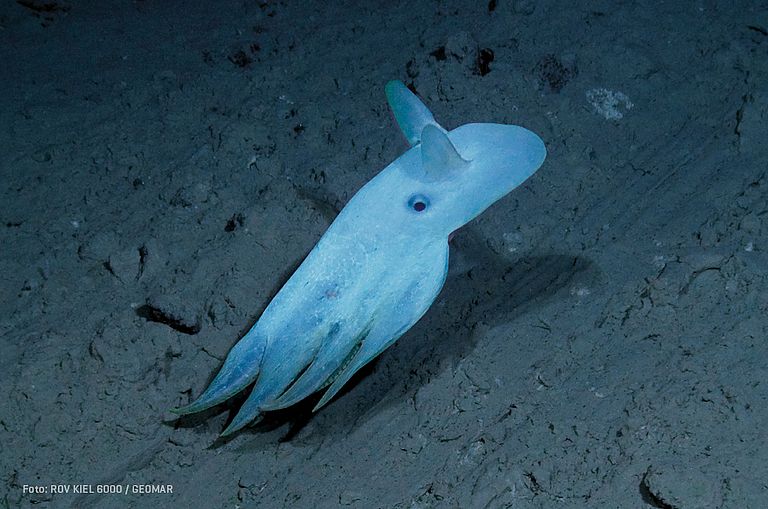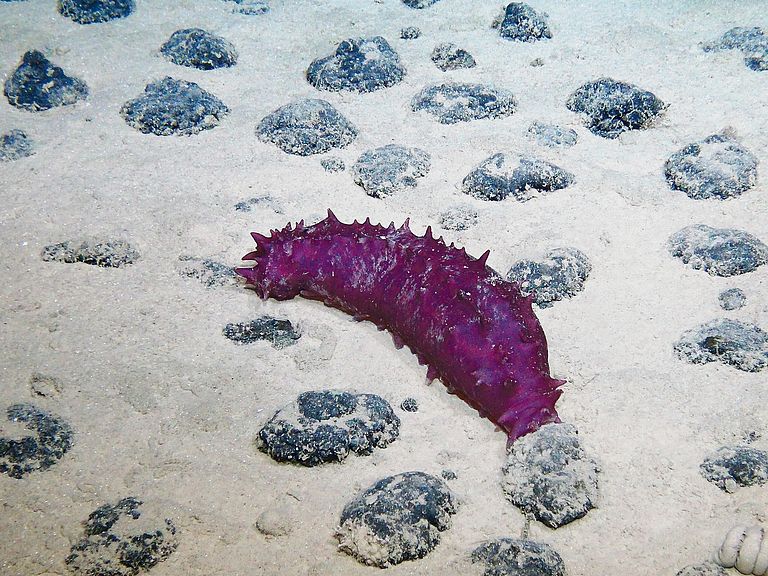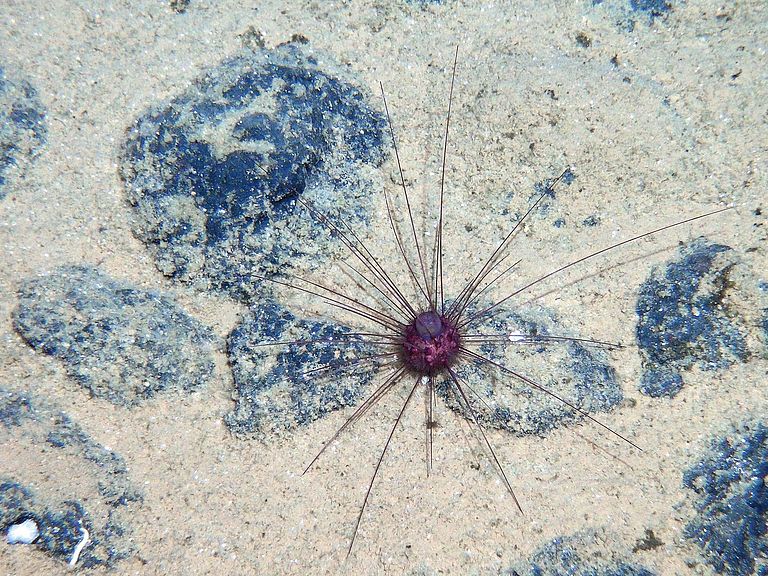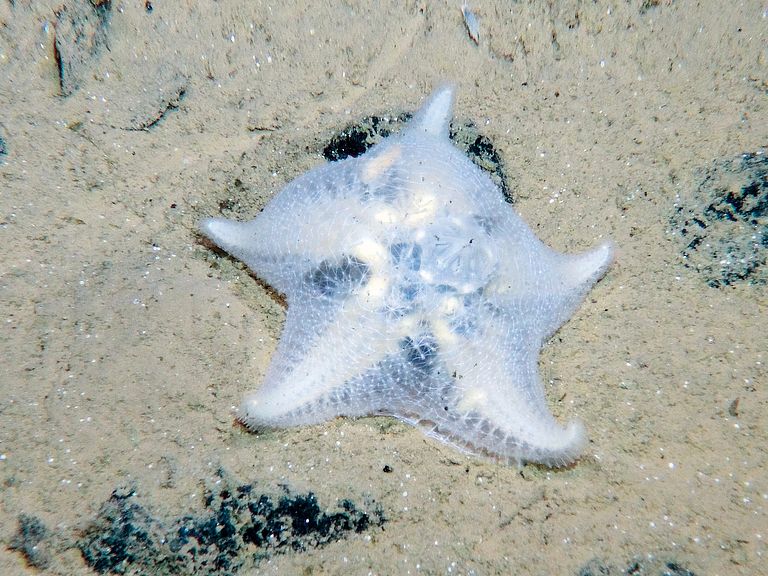Image of the month: March 2020
The small, precious nodules and their inhabitants
We are located about 4000m below the ocean surface in the Clarion Clipperton Zone (CCZ), which is located between Mexico and Hawaii. Here, the ocean is home to large deposits of manganese nodules , distributed over extensive areas of the abyssal seafloor. It is dark down here. The water slowly drifts past us and the deep-sea robot floats over the potato-sized manganese nodules. Its lights illuminate the muddy seafloor and it takes picture of numerous sea cucumbers and sponges that inhabit the manganese nodule fields. Occasionally, fishes or octopods of various shapes and colours or even completely colourless like ghosts glide past the robot and gloom into the camera. Such a creature is shown in our image of the month March. It is a cirrus-carrying octopod. Not much is known about this octopod species. But it is known that his small relatives use the manganese nodule habitat for breeding of their eggs. Since manganese nodules are currently being discussed as a future metal resource, industry and some countries are considering mining of these nodules. However, deep-sea mining would cause long-lasting destruction of the seabed, thereby threatening entire species that use this abyssal habitat. "Manganese nodules are essential to preserve the biodiversity in this part of deep sea", says Matthias Haeckel, marine biochemist at GEOMAR. In order to assess the possible impacts of future manganese nodule mining and to setup a regulatory framework, e.g. defining evironmental standards and guidelines for mining operations, it is absolutely nessesary to better understand the deep see and its ecosystems. The MiningImpact project was initiated to provide the required scientific basis. During expedition SO268, sailing from mid of February until end of May 2019, its international research team, led by GEOMAR, collected sediment samples from the seafloor as well as images, videos and various other data. Based on their results MiningImpact researchers are proposing management concepts to minimize the environmental impacts of deep-sea mining. "Conservation areas already exist around the CCZ. They are very important, but are likely not sufficient in protecting the nodule habitat", explains Matthias Haeckel, "additional environmental management tools need to be implemented."
More infomation:






